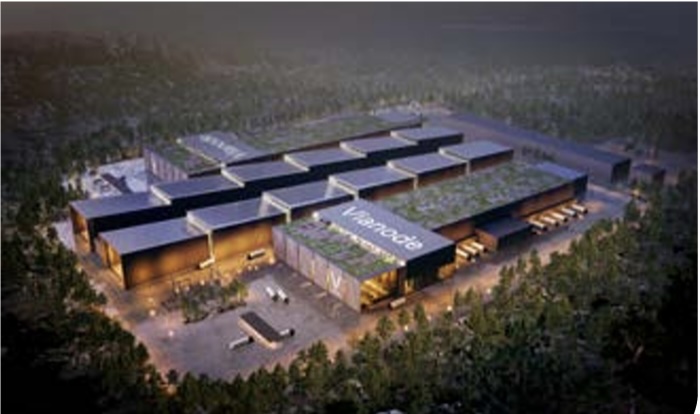With a new graphite supplier deal from GM and lobbyists at the federal and provincial levels, Vianode AS is preparing for a factory in Canada

Vianode AS is looking to open a synthetic graphite refining plant in Canada. Photo: Vianode AS
With a new graphite supplier deal from GM and lobbyists at the federal and provincial levels, Vianode AS is preparing for a factory in Canada
For several months, the Canadian government has said the age of onshoring large-scale battery supply chain factories is likely over.
Well, that statement may have been premature.
General Motors has a robust battery supply chain set up across North America, including key holdings in Ontario and Quebec.
Recently, it signed a new supplier agreement for synthetic graphite with Vianode AS of Norway. According to lobby records, Vianode is evaluating Canada as a location for a new North American factory.
“The agreement covers development of large-scale manufacturing capacity and supply of synthetic anode graphite towards 2033,” reads a press release from Vianode, issued earlier this month.
“The high-performance anode graphite will be shipped from Vianode’s IRA compliant large-scale plant in North America with production starting in 2027.”
Introducing Vianode AS
Vianode was established in Norway in 2021.
On its website, the company details an ambitious plan to become a major North American graphite supplier by 2030. Its roadmap to do this includes running a successful funding round for a North American factory in 2025 and having that factory be operational by 2027.
“Vianode’s advanced battery materials enable cost-efficient batteries and EVs with better performances and a fraction of the carbon emissions of conventional technologies,” says Burkhard Straube, CEO of Vianode.
“Our recent creation of Vianode North America and this agreement to supply GM’s North American EV business are key building blocks for a local, resilient supply chain for critical battery materials outside of Asia.”
If all goes to plan, Vianode says it will produce (combined from all its factories) enough graphite for three million EVs, annually, by 2030.
On its own, Vianode says its North American factory will produce 80,000 tonnes of synthetic graphite per year.
That’s enough for 1.5 million EVs.
Moving into North America
Vianode’s interest in Canada was first reported in Automotive News Canada this month.
In addition to Vianode’s recent announcement with GM, the graphite producer is in talks with various levels of the Canadian government.

Vianode’s first point of contact appears to have been Quebec. Lobby records show the company was canvasing opportunities for a graphite factory in the province since July 2023.
By the fall of that year, Vianode was also in discussions with the federal government.
Of note, while the conversations with Quebec appear to have halted as of June 2024, Vianode’s lobby registrations with the federal government are still active. As well, Vianode registered Vianode Canada as an Ontario business, however has no lobbyist registered in the province.
In Vianode’s sustainability report, the company states it intends to build not only a North American factory, but also a European one.
Currently, Vianode is hiring for eight positions in North America. Two of the jobs are in Michigan and six are in Toronto. One of the Toronto job postings refers to “our exciting new large-scale plant in Canada,” seemingly indicating the decision on location is already made.
Vianode AS graphite
Graphite is an essential component of EV batteries. It is primarily responsible for the fast-charging capability of a battery, which can also have an impact on battery longevity.
Historically, refined graphite largely comes from China. It can be carbon intensive to produce and expensive to refine.
Vianode produces synthetic graphite. It claims to be able to do this at a fraction of the cost and emissions produced by traditional methods.
“Synthetic graphite is made from carbon and energy,” reads Vianode’s sustainability report.
“Our proprietary technology enables us to supply material with a 90 [per cent] decreased CO2 footprint, more than 40 [per cent] energy savings, and substantially reduced material consumption, local emissions, land as well as water consumption.”
By 2030, Vianode says it wants to produce synthetic graphite with 1.0 kg CO2 equivalence per kilogram of graphite. The company reports it was able to produce synthetic graphite with 1.9 kg CO2e/kg in 2023, which is “90 [per cent] lower CO2 emissions than today’s industry benchmark.”






